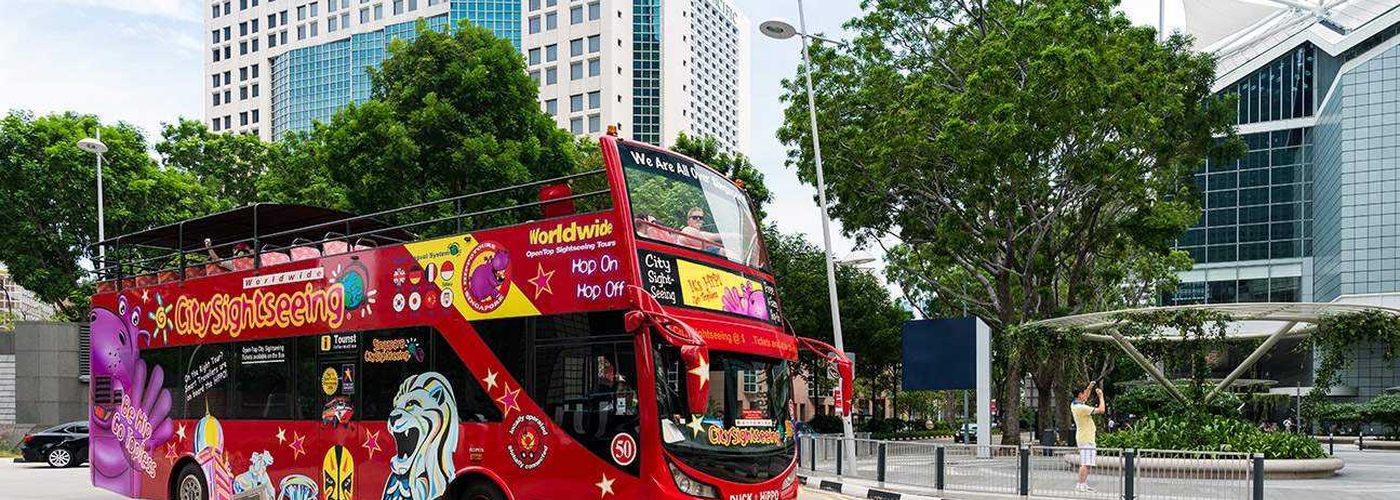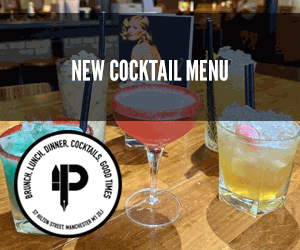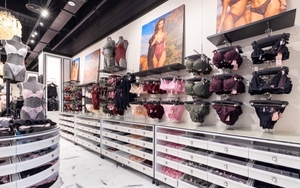Jonathan Schofield talks to Transport for Greater Manchester and gets good news and vague news
PART ONE: THE GOOD NEWS
TOURIST BUSES around cities are an industry standard. But in Manchester, despite the sterling efforts of Manchester Sightseeing Bus Tour on certain Saturdays, there is no regular hop-on, hop-off bus tour of the city as there is in every other city that is serious about tourism.
An October 2016 report to the city council contained these facts and figures. ‘The value of the visitor economy to Greater Manchester is £7.5bn, attracting 115m visitors a year and supporting 91,963 jobs. Over half of the economic impact is in the Manchester local authority area where the value of tourism activity is £4bn, attracting 61m visitors and supporting 48,097 jobs.’
These are big numbers that need supporting with all the ammunition a city can muster in its tourist armoury.
Yet, as I know too well as a tour guide in the city, a large part of the problem for a bus is letting guests see key sites.
In summer, last year, I was asked to do a tour around the city centre, the Quays and Sportcity. Because of traffic restrictions, bus lanes, Metrolink extensions and road closures it was hard to create a route that took in the key landmarks of the city centre in any coherent form. Major buildings with major stories to tell about Manchester had to be missed out including the Royal Exchange, the Cathedral and the University of Manchester.
Often the route forced the coach onto the inner ring road and long moments of languor in traffic jams through redeveloping areas with as much visual interest as the bottom of a bucket.
I always advise guests that tours are always better on foot as there’s more time to absorb the city, more time to tell a story. But some guests will always want to take a coach tour. They may want a broader view of the city, or may only have limited time. Just as importantly, coach tours may be the only vehicle, so to speak, of allowing people with mobility problems to see the city.
So I asked Transport for Greater Manchester (TfGM) a question. Now the tram works for the Second City Crossing are finished and given the bus and taxi only character of Oxford Road and Portland Street, will tourist buses be allowed to use local bus lanes and thus deliver that comprehensive tour?
A spokesperson for TfGM told Confidential, ‘As from January 2017 any vehicle that can carry nine passengers plus a driver, can use a bus lane. As such, if a tourist bus meets this criteria, they are able to use the bus lanes when the sign says ‘Except buses and cycles’.
Hurrah, a hop-on hop-off tourist bus looks viable. But, boo, there are two exceptions to this.
‘Firstly, if the sign says ‘Except local buses only’, only a scheduled local bus services is permitted. A local service is defined as a public service vehicle used for the provision of a local service not being an excursion or tour.’
The good news is ‘there are currently no signs in the city centre that have this local service restriction.’
‘Secondly, there is one sign in the city centre that says ‘Except Metroshuttle buses, taxis and cycles’. This sign is located at bottom of King Street near the Cheapside junction, and refers to traffic turning onto Cross Street. This means that no buses, expect for Metroshuttle, is allowed to turn onto Cross Street.’
Well, if there’s only one sign in the city that restricts movement then tourist buses can cope with that. And it has been very welcome to see two-way traffic again on Oxford Street (not Road), Princess Street and Cross Street. Maybe the future is bright for sightseeing buses.
The route forced the coach onto the inner ring road and into traffic jams through areas with as much visual interest as the bottom of a bucket
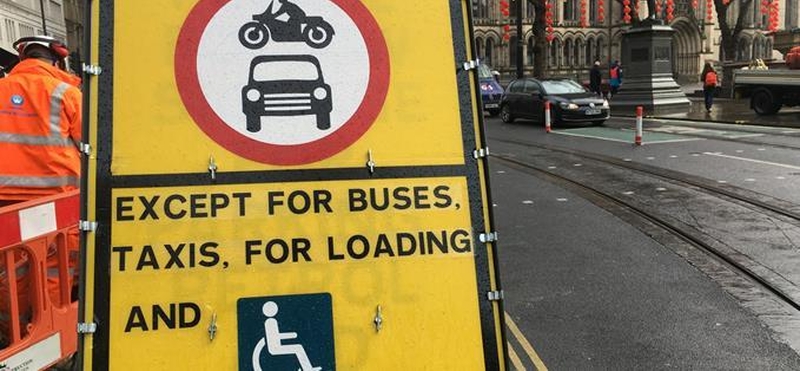
PART TWO: DIGRESSION AND DREAMS
Yet there is a big shadow darkening this apparent good news. Even if tourist buses have freedom of the city then that matters for nothing if they still can’t move.
In November, a Swedish group wanted a coach tour of the city centre taking in the Quays, University and Old Trafford. It took us forty minutes from the pick up at All Saints on Oxford Road to the Opera House on Quay Street – a distance under a mile. It was hopeless, red rear lights jammed ahead, no way to turn to avoid the traffic. I suggested we change the ninety minute coach tour into a city centre walking tour.
Desperate to get off the bus the guests agreed. If they’d had mobility problems that would not have been an option. So the next question to TfGM was: Will there be any point in doing regular hop-on, hop-off bus tours around Manchester in future, given the hideous congestion at present? Or does TfGM think the congestion will alleviate when the major changes to trams and bus routes are in place by the end of this year?
In other words was there a rationale behind the transport changes that would normalise the situation which is so fragile at present a single incident can grind road transport to a halt across the city?
What I received was an answer back that was so long I’m still reading it two weeks later. It was annoying and seemed to avoid the issue about tourist buses. It was a long rambling justification of the changes without any assurance things might change.
The response concerned general principles and was a welter of stats and sentences such as: ‘When you consider a bus can carry between 50 and 70 people in the same space as two cars it’s clear they provide a better use of the limited space afforded by city centre streets. They represent a more sustainable mode of mass transit given that the vast majority of cars on our roads at peak times typically carry only one or two people.’
Another paragraph trundled along: ‘The aim of schemes like the bus priority package and Metrolink’s Second City Crossing is to provide the travelling public with attractive and genuinely viable alternatives to private motor vehicles. For many years the number of vehicles entering the city centre has highlighted the real problem that too many vehicles have too little road space, not only through the city’s streets but also along key arterial routes. Public transport produces less air pollution per journey than cars and with a growing shift for bus operators to run modern hybrid buses air quality will be vastly improved in the years to come.’
I replied that if TfGM insist on referring to Manchester's economic position, they must see the grind and slog of simply getting around the central areas of the city centre at present is ridiculous and, sadly, it often seems buses have been affected by this as much as general traffic including would-be tourist buses. The result is that shops, in particular are suffering, as custom bleeds to the Trafford Centre and elsewhere.
For many people, I pointed out, the business of a transport policy for any city centre is to get as many people in as possible, not to limit the numbers, or make things harder. Meanwhile, to compare the 50/70 people on a bus to the one or two in a car is a nonsense because buses are simply not being used anywhere close to capacity in many parts of the city. The obscene number of almost empty buses down Oxford Road particularly at rush hour is a case in point and it would be interesting to learn how many cars it would take to pump that level of poison into the city centre air.
It seemed the principle underlying TfGM transport logic was driven by hope and wishful thinking rather than reality, by a doctrinaire idea of how people should behave according to policy makers rather than how they do behave. Jam tomorrow, traffic jam today.
If Manchester is to complete for tourism with other UK cities in the future then road conditions and customer experience will need to improve
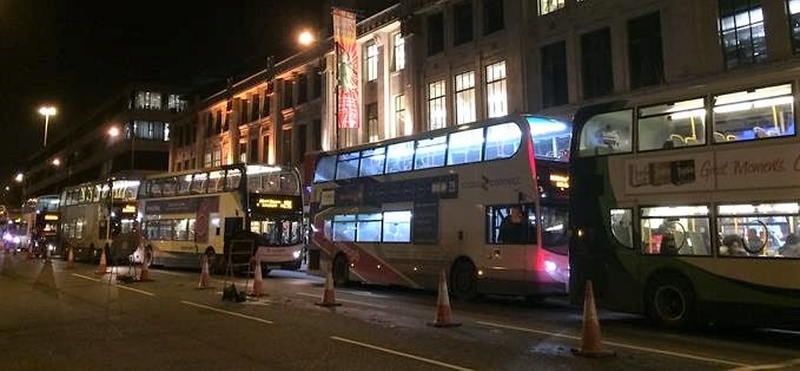
PART THREE: BACK TO THE POINT
So I asked again, getting back to the point, does TfGM think the city centre will be clear for tourist buses to offer a viable service? And if so when?
There was no clarity in the second response. There was more general principle stuff and more stats, but it was almost condescending in its vagueness and a lack of understanding of that £7.5bn visitor spend.
The TfGM spokesperson said, ‘(We) fully agree Manchester city centre is a place with rich heritage and many great landmarks that deserve to be seen by visitors to the city. There is nothing stopping these types of tours taking place now, however, it would be prudent of any tour operator to devise routes that are accessible and free from roadworks that result from investment to better the city. (We are) confident that once the two major schemes we’re delivering are complete then tourist buses will be able to access many key areas along their routes including Oxford Road and Cross Street. However, it would be remiss to not caveat that any third-party work taking place may still result in closures to facilitate work; however, while these works are out of our control we will always do our utmost to keep the city moving and help people get around by providing them with the travel information they need.’
Clear as mud then and ignoring the fact of how difficult satisfactory coach tours of the city are NOW. The response seemed to be saying let’s hope at some time in the future it all comes together, but best keep an eye out for traffic problems, as if tour operators and guides don’t do that as standard.
Paul Beaumont of Greatdays Travel Group in Altrincham is an operator who wants to provide tourist buses later this year. But he is worried.
"We have been planning to invest in a possible tourist hop on/off sightseeing bus route for Manchester during the past 18 months,” he says. “There have been numerous challenges with the amount of construction including new tram routes and huge amount of building works leading to either road closures or lane reductions in the city centre. These cause constant traffic flow restrictions, street closures and in some cases change of direction travel on many roads. We have had to re-engineer our provisional bus service route numerous times. If Manchester is to complete for tourism with other UK cities in the future then road conditions and customer experience will need to improve.’
TfGM in its replies also said, ‘Manchester is home to the second largest economy outside London. It’s one that has aspirations to become the heart of the Northern Powerhouse with the very best employment, healthcare and education opportunities in the North of England. If we’re to realise our ambition and meet our potential then the very best public transport system is needed in order to reduce traffic on our roads so that people can move more freely. If we didn’t implement strategic transport interventions to address congestion then the city’s economy and desirability as a place to do business falters.’
They also say, ‘It’s in everyone’s interest that alternative modes of transport are explored’.
A live experiment with a city’s infrastructure is maybe not prudent, maybe it’s actually risky. Many people wonder what was wrong with traffic movements ten years ago when the only problems seemed to occur at match times rather than at most rush hours and randomly through the day.
Still, looking on the positive side our tourist economy may soon be ready for a proper hop-on, hop-off sightseeing bus tour. Theoretically. If, as TfGM seem to fervently hope (fingers crossed, where's the shamrock and rabbit's foot?), it's all going to work out fine. We just have to trust them, proof of the pudding or not.





